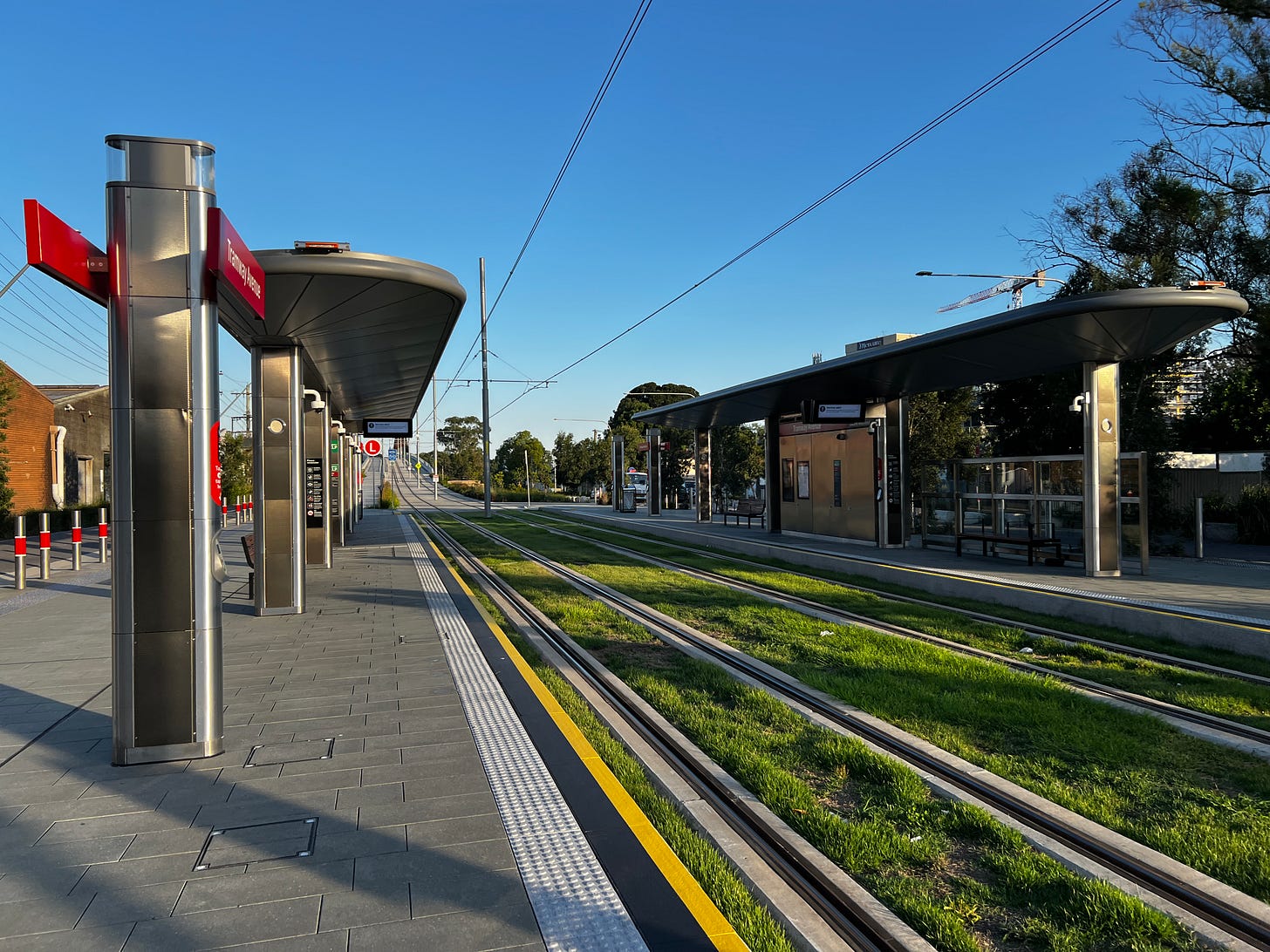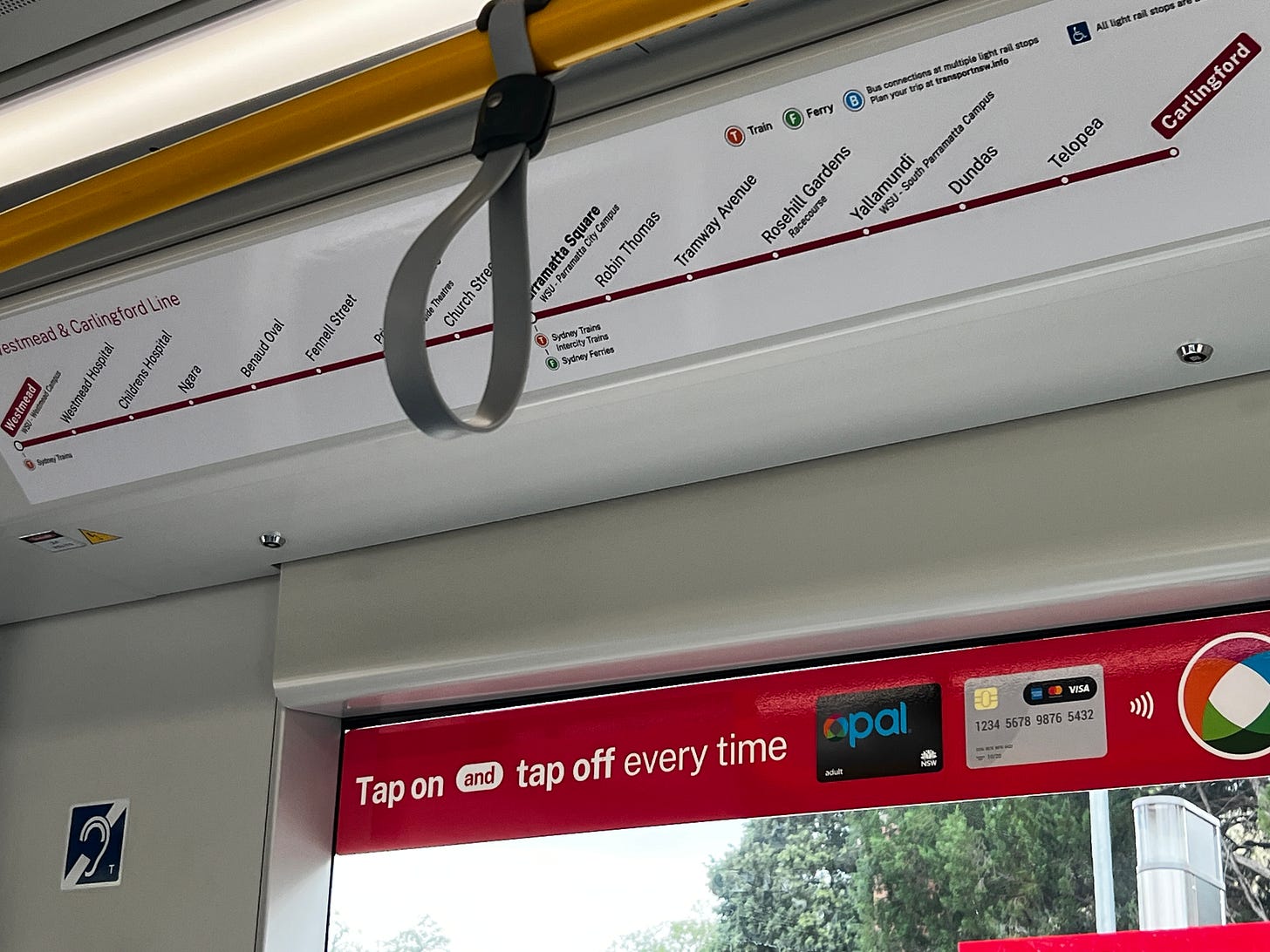Parramatta LRT Now Open
As of Sunday, I’ve now had a chance to both visit, with the Sydney Transport Advisory Board, the week before it opened, and now ride the Parramatta LRT, Sydney’s latest rail line in the orgy of transport projects underway. This was a relatively low-key openings, not much in the way of parties, nothing in the way of disasters. My friend who lives across from Westmead LRT Station didn’t even know it was open, thinking it was still in its testing stage.
The L4, shown in the map below, runs from Westmead Station, past the Westmead Children’s Hospital, near the Parramatta Female Factory at Ngara,1 through North Parramatta, down Church Street (Parramatta’s ‘Eat Street’), past the under construction Western Sydney Metro line turning onto Macquarie Street,2 to just north of Parramatta Square, where transfers to Sydney Trains can be made, east along George Street and the appropriately named Tramway Avenue, onto Rosehill Gardens, a race track (for horses) which many people would like to convert to housing, but some people wouldn’t, or say they wouldn’t as a bargaining ploy to extract better compensation, and continuing to follow the old (not the new) T6 one up to Carlingford, but NOT on to Epping to connect with a major transfer point.
Ride Experience: The quality of the trip was fine and uneventful (which is exactly what you want in Public Transit. If you have been on another modern LRT, it’s like that. I had expected to see some visible difference from Sydney’s L2 or L3 which opened 5 years ago, or the L1 from 10 years ago, thinking there would be some progress. Nothing is obvious to the user. That’s fine, I hope it increases compatibility.
Power: In the Parramatta CBD there are no overhead lines for the LRT, and no underground wires. It is battery powered. There is in-ground charging at Westmead terminus and overhead lines on the eastern end. An interesting choice? I wonder how much cost this added? As batteries get better over time, it may be possible to do end-to-end via battery.
Stations: The stations are simple, functional, the traveler information signs seemed to work on Day 1 (take that Minneapolis). A few are in neighbourhood centres, with a small set of shops, (or even just residences) rather than major activity centres. Many have had accompanying footpaths and bikelane upgrades.
Capacity: Says room for 400 passengers. I imagine this will be a rare event, and can’t think of a case where I would prefer to be on this train with 399 other people as opposed to walking.
Route: This is highly circuitous, and only makes sense if there are future extensions. This article by Bambul on the Transport Sydney blog discusses some options. I have my own view of future LRT and busways in Sydney here at Sydney FAST 2030. This would extend the Parramatta LRT north to Castle Hill, northeast to Epping, and east to Ryde and ultimately Sydney itself.
Demand: This line will get used in segments, but I can’t imagine much end to end use. Even Westmead to Parramatta is faster by bus. But instead think of it as just a set of overlapping markets.
Parra has a lot of development, though perhaps too much office space in advance of demand, it also made an effort to steal the Powerhouse Museum and is building a massive new museum on a flood plain.
FIN.

I am told this not where females were manufactured, but really a female gaol in olden times.
The most Sydney Street name ever.
Keep reading with a 7-day free trial
Subscribe to Transportist to keep reading this post and get 7 days of free access to the full post archives.





